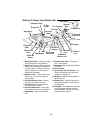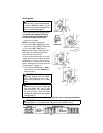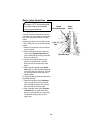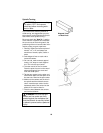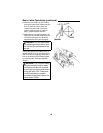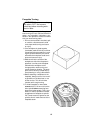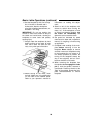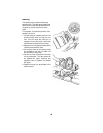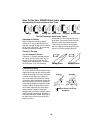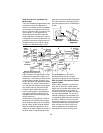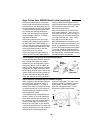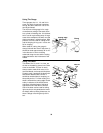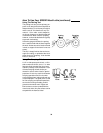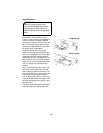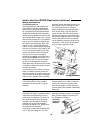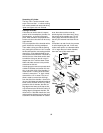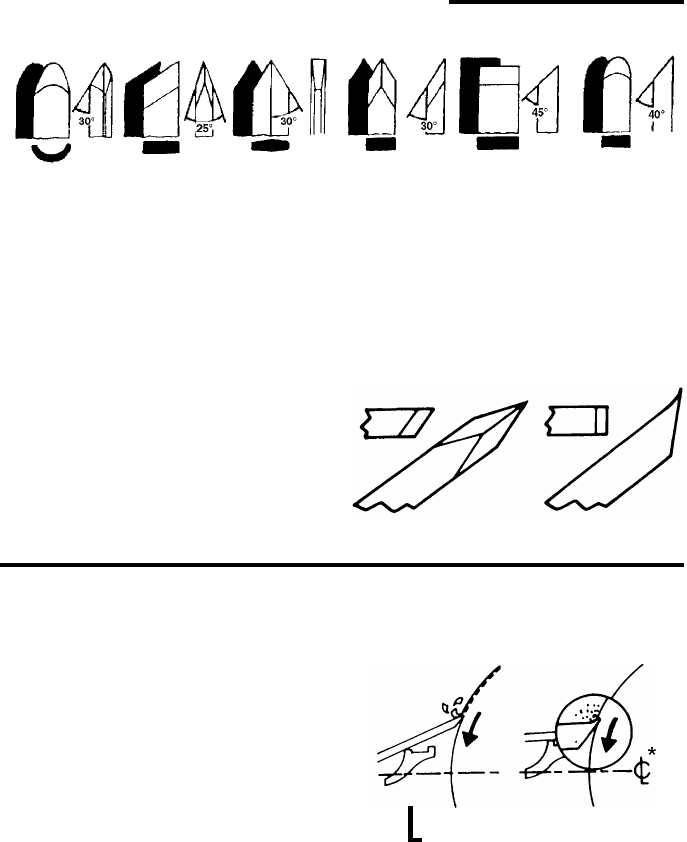
30
How To Use Your RIDGID Wood Lathe
Woodworking Chisels and How to Use Them
The Six Commonly Used Chisel Types
Selection Of Chisels
Better chisels have handles approxi-
mately 10-in. long, to provide plenty of
grip and leverage. Sharp tools are essen-
tial for clean, easy work... buy tools that
will take and hold keen edges.
Theory Of Turning
The Two Classes of Chisels
These are: 1) Chisels intended primarily
for cutting, and 2) chisels used only for
scraping. The cutting chisels are the
gouge, skew and parting tool. These are
the most used. They are commonly
sharpened to a razor edge by honing on
both sides. The scraping chisels are the
flatnose, round nose and spear point.
These are not honed on the flat sides -
the wire edges produced by grinding are
left on to aid in the scraping process.
Gouge Skew Parting Tool Spear Point Flat Nose Round Nos
e
Cutting Chisel
Scraping Chise
l
Cutting and Scraping
To cut, the chisel is held so that the sharp
edge actually digs into the revolving work
to peel off shavings. To scrape, the chisel
is held at a right angle to the work sur-
face, and removes fine particles instead
of shavings. Many operations require that
the cutting chisels be used for scraping;
but scraping chisels are practically never
used for cutting. Scraping dulls a chisel
much faster, especially the razor sharp
cutting chisels. Cutting is faster than
scraping and produces a smoother finish
which requires less sanding. However, it
is far more difficult to master. Scraping, on
the other hand, is far more precise and
easier to control.
Cutting Scraping
C
* Means Center Line of the
workpiece



